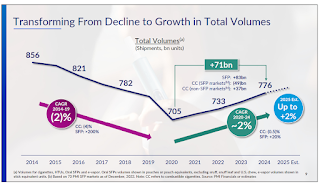Today's edition of the Canada Gazette (Part II) included the first public release of the regulations that will require tobacco companies to pay some of the federal governments' costs to manage the industry. These regulations are the Tobacco Charges Regulations SOR/2025-80. The regulations were announced two weeks ago by Ya'ara Saks before the change in prime minister and cabinet.
Under this new regulation Health Canada, the Public Health Agency and Indigenous Services Canada are required to calculate the amount that it spends in its tobacco regulation and then apportions this cost on manufacturers in proportion to their revenues. Companies are required to provide net sales revenues for each category of tobacco products (e.g. cigarettes, little cigars, heated tobacco, etc.). The charge is not applied to vaping products, nicotine pouches or other nicotine products which do not contain tobacco leaf.
The date that the regulation comes into force is not established. The text provides it to come into force no earlier than May 1, 2025, but leaves an option for the incoming government to cancel the approach merely by not completing the registration process. "11 (1) These Regulations, except section 9, come into force on May 1, 2025, but if they are registered after that day, they come into force on the day on which they are registered."
This charge was a key demand of leading health charities during the last federal election, and was the only tobacco- or nicotine- related measure identified in the mandate letter issued to the Minister of Addictions in 2021. The regulation was adopted by cabinet on March 6 - eight days before the change in government. (The 2021 mandate letter has been removed from the Prime Ministers website, but is available on the Internet Archive.)
The Tobacco and Vaping Products Act was amended as part of the 2024 budget bill to authorize the government to recoup certain costs provided that they were related to "the carrying out of the purpose of this Act."
The TVPA purpose with respect to tobacco is narrowly cast. Other than the generalized intent "to protect the health of Canadians", it identifies the protection of young persons and others from inducements to use tobacco products, to restrict the access of young persons to tobacco products, and to enhance public awareness (and avoid misinformation) about the risks of tobacco use.
Nonetheless, the intent of the department at this time is to use this charge to recoup costs associated with activities that are not clearly embraced by the TVPA purpose. The activities listed in the (non-binding) regulatory impact statement (RIAS) are: "compliance and enforcement activities, laboratory analysis, development and implementation of regulations, public education and awareness on the health hazards of tobacco use, supporting improved services and resources to help people quit smoking, and providing funding to First Nations, Inuit and Métis Nation to develop and implement approaches to reducing commercial tobacco use. The costs to administer the tobacco cost recovery framework will also be included. Activities undertaken in relation to vaping are not included at this time, except if they are for the purpose of helping Canadians quit tobacco."
The weakness of the link between these activities and the legislated purpose of the act were the focus of the concerns we expressed about the proposed fee last summer, and our subsequent recommendations for a revised purpose to the law. These concerns were not identified in the RIAS published today.
To date Health Canada has not predicted how much it would recover as a result of this new charge. The RIAS identifies that the regulation will cost the industry $42.54 million per year, including their own reporting and administrative costs. The administrative costs for the federal government to administer the program are estimated at $1.3 million per year.
The RIAS states that the three departments which will participate in this process currently receive 85% of the $66.2 million annual budget for tobacco control (including vaping and other forms of nicotine use). Information from other sources on federal expenditures on tobacco control can be found on our 2024 fact sheet










